Pelješac Bridge Finally Completed!
July 28, 2021 - What always seemed to be an unattainable dream (even in recent years) is now a reality: the Pelješac bridge has been completed tonight and Croatia is one again.
The impossible is no longer so, and as of tonight, the Croatian territory reconnects with Dubrovnik via the Pelješac bridge, and the Neum corridor will no longer be the way to the Pearl of the Adriatic and back. Tonight at 11 pm, the last segment of the steel span structure of the Pelješac Bridge will be installed, which will connect the mainland from Komarna with Brijesta on the Pelješac peninsula. Although the vehicles will not cross the new bridge until June next year, tonight's connection of its construction will be one of the most important dates in the calendar of this, as the Minister of the Sea, Transport and Infrastructure Oleg Butković called it: ''the project of all projects''.
Prime Minister Andrej Plenković and several of his ministers, present at a celebratory event. (Video: Index.hr)
The project started on several occasions, but for various reasons, it stalled until a contract worth half a billion euros was signed in April 2018, of which the European Union gave as much as 85 percent. The contract entrusts the construction to the Chinese consortium China Road and Bridge Corporation (CRBC), one of the globally largest and most experienced in such works. It was also the first such project of a Chinese company in the European Union.
Dubrovnik Mayor Mato Frankovic shared an emotional post on his Facebook account, reflecting on the importance of the project for the Pearl of the Adriatic, and the story behind it. ''After 303 years, the extreme south of Croatia will be connected to the mother country, and we, the inhabitants of this part of Croatia, will cease to be second-class citizens waiting in a column at the border crossing for transit from one part to another. In recent days, many have been trying to direct the historical chronology of the Pelješac Bridge towards one, two, or some third option'', he wrote in his Facebook post. Franković also thanked PM Andrej Plenković, and he ended his post by saying that ''to the questions of what the bridge should be called, the answer is actually simple: the Pelješac Bridge and let it be guarded by St. Blaise and St. Rocco.
Likewise, the publication was accompanied by a video in which the progress of the bridge can be seen until a few days ago. You can see it below:
When talking about the impossible, it is precisely difficult not to go back thirty or twenty years, and remember the times when the project was groped around but without any concrete plan. Even since the project began three years ago, there have been many, many occasions where political tensions and doubts arose not only about its completion but about its development itself.
Now, the Peljesac bridge is a reality after the tireless and titanic efforts made in these three years and not only because of the demand for a bridge of these dimensions but also because of the area and the climatic conditions in which it was built. It is worth mentioning that the completion of the project has occurred in a very early period, and for this it would be necessary to work even at night and at dawn, taking into account the strong winds and storms that hit the area.
For more news about Croatia, click here.
Butković: Pelješac Bridge To Be Connected With Last Segment Next Week
ZAGREB, 22 July (2021) - Sea, Transport, and Infrastructure Minister Oleg Butković said on Thursday the Pelješac Bridge would be connected with the last steel construction segment next week.
"We are connecting the Pelješac Bridge with the last segment of the steel construction. It will be a big event. It will happen on 28 July," he told the press in Omiš.
After that, the bridge will be completed with access roads, which should be built by the beginning of next year, Butković said.
"All of it will be put into operation early in June next year."
He said the bridge and the access roads would be "the project of all projects."
For more news about Croatia, click here.
Queen of Oysters Project Presented in Dubrovnik
30 June 2021 - The EU-funded project entitled Queen of Oysters was presented today in Dubrovnik’s Hotel Lero. The project is focused on traditional Mali Ston shellfish farming on Peljesac Peninsula.
Project coordinators Andjela and Ksenija Matic of EventLab alongside the head of the project Vedran Kunica, presented the efforts to local tour guides today. Vedran Kunica is one of Pelješac oyster farmers and a secretary of Stonski Skoljkari – Association of Ston Shellfish Farmers.
Mali Ston Oysters recently received the European Union’s protected designation of origin and protected geographical indication. This is the only instance of such a designation for this specific type of oyster. The European flat oyster (Ostrea Edulis) has been cultivated in the Bay of Mali Ston for centuries. It is one of the most delicious oysters in the world. This is one of its very last natural habitats in Europe. Locals call it the Queen of Oysters. The intent now is to turn this delicacy into a local food brand. While Mali Ston oysters might be popular on a national level, globally they are still to receive the recognition they deserve. Most guests coming to the Dubrovnik area don’t realise they are going to be staying so close to the source of such wonderful seafood.
Project Goals
The Queen of Oysters project is complex and mainly focused on marketing and promotional efforts. It started in February this year and will last for a year. Through it a new visual identity of Mali Ston oysters is envisioned. It is simple and to the point.

One of the goals of the project is communicating the information on local oysters to various stakeholders and raising awareness and consumption of oysters locally. Special workshops with restaurant owners and local chefs are a part of the efforts as well. Restaurants play a key role in the sales of Mali Ston oysters.
Various events were in the organisers' plans as well, but due to COVID-related restrictions, not all are going to happen.
When it comes to promotional efforts, the project is going very strong. There are oyster posters on Dubrovnik Airport and on city buses. Mali Ston oysters are also a part of Croatia Airlines' in-flight magazine. You will be able to see some project posters on Jadrolinija ferries during the summer as well. Local restaurants received hemp fabric promotional aprons featuring the project logo. The response from them is overwhelmingly positive.

Brochures and booklets
Printed material is especially impressive. Three different booklets and flyers created through the project contain interesting information about the oysters as well and wonderful visuals. They represent a great way of raising awareness of Mali Ston oysters and the area in which they traditionally thrive. The small flyer is going to be in restaurants to inform the guests about Mali Ston Oysters. It will be at the airport as well. The design of the brochure is such as to give a bit more info on history, tradition, and oysters themselves. It also folds out into a lovely photograph. The booklet is serious informational material that contains thorough information on the oyster and the area.
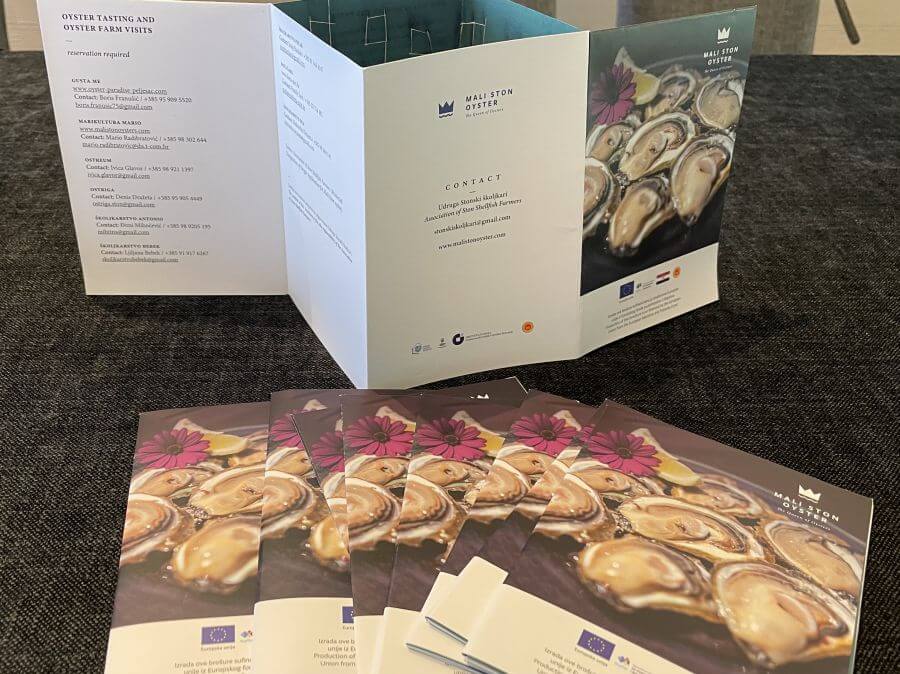
It is clear this project is the long-awaited push to brand Mali Ston oyster a bit better. Sadly, this treasure of local cuisine has spent too much time in the shadows of some other local attractions.
The presentation went off successfully with plenty of questions and suggestions from the auditorium. Also, there were some interesting ideas about how to increase sales and there was much talk about the guests and their experiences.
For more content like this follow Made in Croatia.
Peljesac Peninsula Oyster and Mussel Production Facing Disaster
18 June, 2021 – Mali Ston on the Peljesac Peninsula is famous for its top quality oysters and mussels. But, recent drop in sales is threatening the livelihood of local producers and the Peljesac Peninsula oyster and mussel production as a whole.
The Peljesac Peninsula in Dubrovnik-Neretva Country is without a doubt one of the most beautiful parts in all of Croatia. Wine production and the cultivation of oysters and mussels have given it a well-earned international reputation. Traditions that span centuries, beautiful scenery and amazing historical towns and villages have turned Peljesac into one of the most favourite destinations for foreigners and locals alike.
It comes as no surprise that most of the yearly revenue of local shellfish farms comes from tourists travelling to Peljesac or restaurants around Croatia selling Peljesac Peninsula oysters and mussels. They're produced in cycles and are mainly sold fresh. So, any drop in sales usually means an un-recoverable loss. In 2020 there was an enormous drop in sales for Peljesac. This was the effect of COVID-19 related travel restrictions and the closing of restaurants.
Dangerous numbers
Slobodna Dalmacija released a report on the current state of oyster and mussel farming in Mali Ston with some alarming numbers to consider. Local aquaculture farmers are currently down 80% in revenue when compared to 2019. After a disastrous 2020, this number is very serious indeed. Along with this crisis, they are apparently facing problems with illegal oyster farms and illegal selling. According to a few interviewed producers, much of what is being sold doesn't even actually get recorded for tax purposes and this creates additional problems for those who are choosing to work above board and legally.
The President of a local association of shellfish producers, Marija Radic, denies there are illegal farms in operation in and around Peljesac. She also stated that instances of selling Peljesac Peninsula oysters and mussels without proper invoices is less common than some of the local producers might claim. However, she did confirm the numbers of around 80% in terms of the drop in sales are sadly correct. The only thing that can save the majority of Peljesac Peninsula oyster and mussel farmers is the return of tourism and restaurant consumption. The local market is simply too small and unable to alleviate such a dramatic drop in sales.
Do your part in helping out local businesses by visiting gorgeous Peljesac for a food, wine and beach trip. Here’s some of the best beaches on the peninsula and here you can find the locations of top local wineries.
For more, follow our dedicated business section.
Pelješac Interactive Map with Cycling and Hiking Routes Available
May 26, 2021 - As part of an effort to strengthen adventure tourism on the peninsula, a Pelješac interactive map is available with five circular mountain biking routes and six hiking routes.
As stated by turistickeprice.hr, tourist communities from Pelješac united at the end of last year to develop tourist products of Pelješac. Specifically, they approached the development of outdoor offers through hiking, cycling, and windsurfing, and five thematic festivals are planned in which visitors would enjoy the flavors of Pelješac, traditional dishes, and the well-known Pelješac wine.
As part of the development of the Outdoor Program, an interactive map of mountain cycling and hiking routes in Pelješac was made. There are currently five circular mountain cycling and six hiking routes on the map. Additional route extensions are planned, as well as the addition of catering facilities and wineries to the map so that guests can easily find their way around the area and get to know the complete offer of Pelješac. Pelješac is rich in wineries and traditional taverns and restaurants, so the combination of outdoors and traditional flavors is quite natural.
On the map, you can see information about the difficulty of the route, the type of surface, description, photos and you can download the GPX track that can be used in various mobile applications and smartwatches. There is also a link to the OsmAnd mobile app on the map, as a suggestion. Otherwise, the app is free to download and works offline.
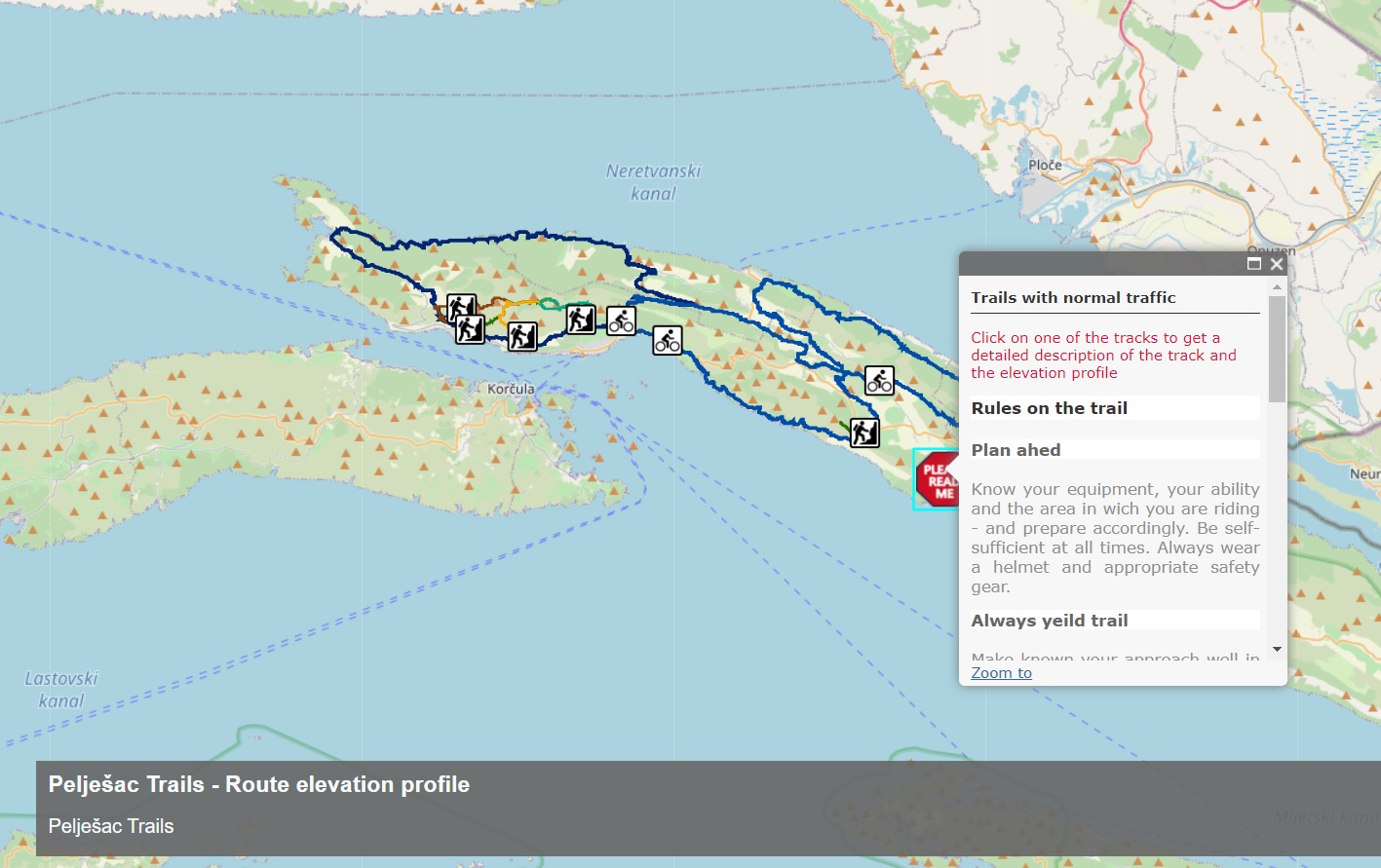
Pelješac Interactive Map with Cycling and Hiking Trails (Screenshot)
The map shows a total of five mountain bike circular routes with a length of 184 km and six hiking routes with a total length of 39 km. The Tourist Boards of Ston, Janjina, Trpanj, and Orebić note that they have developed an interactive map that cyclists and mountaineers can study without coming to the info center, or looking at the websites of tourist boards. In addition, the trails were made in collaboration with local cyclists who know the terrain best, and thus end-users will be able to discover the most interesting parts of Peljesac, which hides many natural beauties.
You can find the English version of the interactive map of Pelješac HERE, and the Croatian version HERE.
You can learn everything about what the Pelješac peninsula can offer you on your next trip, in Total Croatia’s Pelješac peninsula on a page, HERE. Total Croatia’s articles are now available in your language!
For more information about cycling in Croatia, go to Total Croatia's dedicated page.
For more on travel in Croatia, follow TCN's dedicated page.
Pelješac Cellar Festival Starts Tomorrow on the Famous Dalmatian Peninsula
May 14, 2021 - Starting tomorrow, the Pelješac Cellar Festival will take place in one of the most famous wine regions, and it will include discounts, workshops, and more!
Pelješac is well known for its wines, derived from the iconic Plavac Mali grape, which is responsible for the powerful reds made in the region. For some Croatian wine experts, the Plavac from the slopes of Dingač and Postup are among the best wines in the country.
The fame of the peninsula among wine lovers is indisputable, and to their delight, starting tomorrow a new edition of the Wine Festival will take place in Pelješac, the Pelješac Cellar Festival, and will last for a month.
As hrturizam.hr reports, wineries, shipowners, shellfish farms, family farms, restaurants, and taverns… 53 of them from all over the peninsula joined the largest event on Pelješac so far, the Pelješac Cellar Festival, which starts from Saturday, May 15 until June 15, 2021.
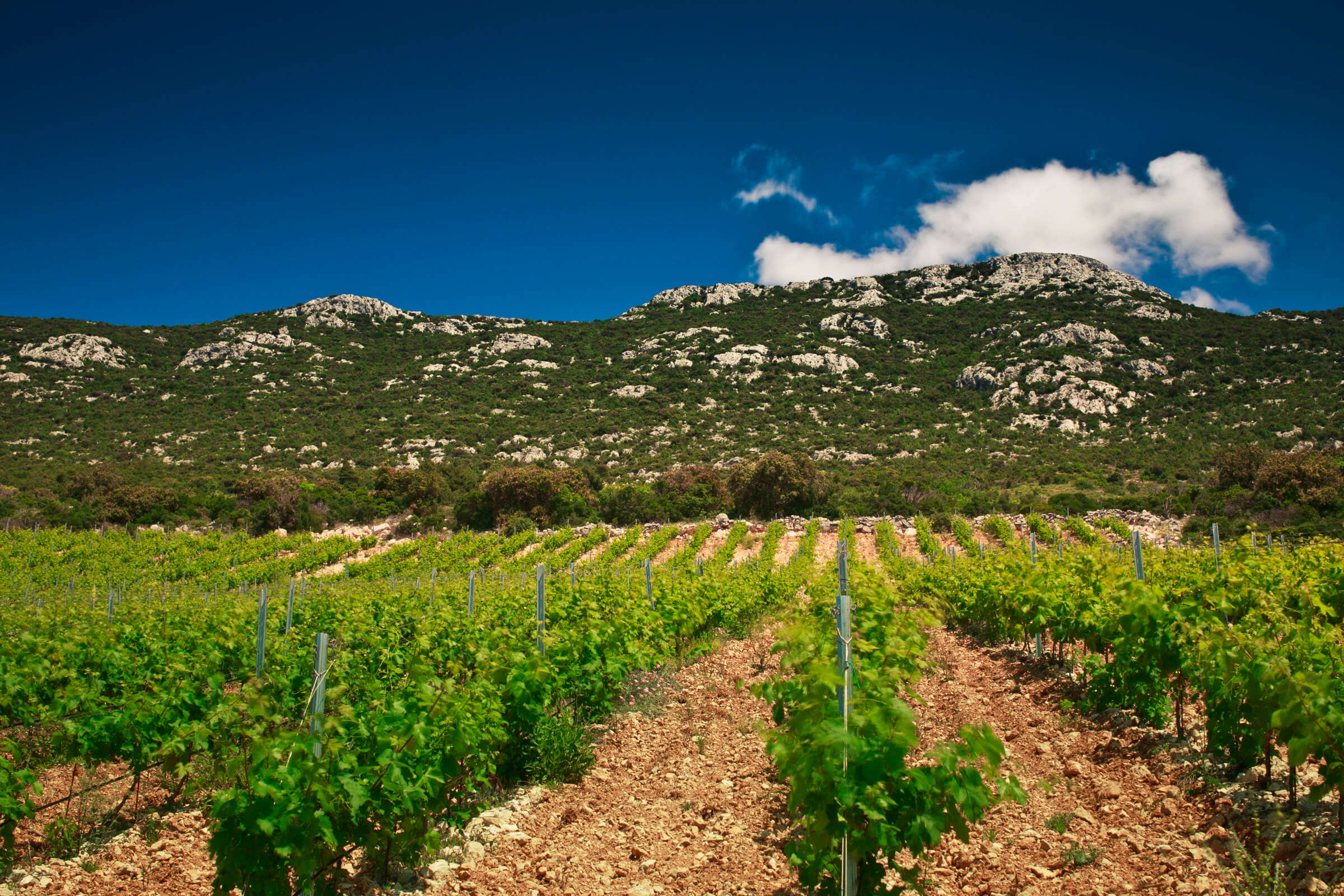
During the festival, the wineries participating in the project will offer their visitors discounts on wine (20% on certain wine palettes), and restaurants and taverns will have menus with traditional Peljesac specialties with a glass of local wine designed specifically for the festival (two menus, one of 120 kuna and one of 180 kuna). The festival will also include educational workshops, professional lectures, and various other events of interest to wine lovers.
‘‘We are glad that a large number of winemakers have joined the Pelješac Cellar Festival, which focuses on Plavac Mali, a trademark of our peninsula and one of the largest wine brands in Croatia. All research confirms that the eno-gastronomic offer is among the first three motives for tourists to come to our country, and our wine empire with famous vineyards such as Ponikava, Dingač, and Postup, has become a real tourist attraction and not only for wine lovers. As part of the Festival on June 4th and 5th, we are organizing the traditional Pelješac Cellars Open Days, an event that usually takes place in December. We hope that this June version will become another traditional wine festival’’, said Slobodan Rosić, secretary of the associations Pelješac Wine Routes and Plavac Mali Pelješac.
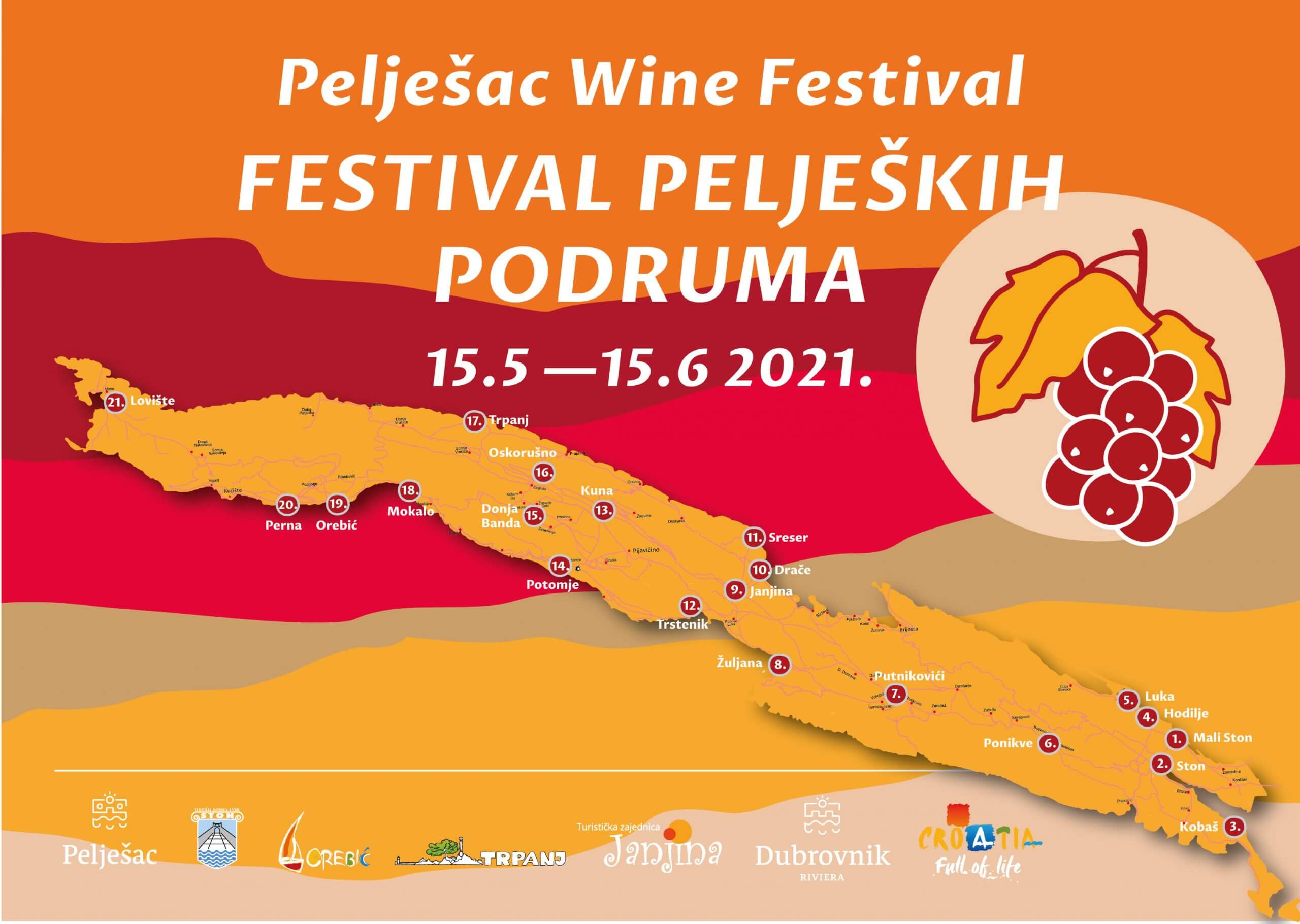
The director of the Ston Tourist Board, Fani Slade, pointed out that all four tourist boards from Pelješac are participating in this project in addition to Ston: the Tourist Boards of Janjina, Orebić, and Trpanj, and the idea was realized in cooperation with Feel IQM. He says that the Festival would not have been possible without the support of the associations Ston's Shellfish, Pelješac Wine Routes, and Plavac mali Pelješac, as well as the Ston Walls, Solana Ston, and the Maritime Museum in Orebić.
‘‘We have taken care of epidemiological measures, so there is no mass gathering during the event, and we plan to hold an accompanying program such as wine workshops and conferences online. We also recommend all visitors announce their arrival at the winery, family farm, restaurant, or tavern in advance. We believe that next year the pandemic will be behind us, so the second edition of the Pelješac Cellars Festival will offer a rich entertainment and educational program’’, says Slade.
Croatian wines and grapes are among the best in the world, and you can find more information about them in Total Croatia’s Guide to Croatian Wine HERE. You can also learn more about what the Pelješac peninsula can offer you on your next trip, in Total Croatia’s Pelješac peninsula on a page, HERE. Total Croatia’s articles are now available in your language!
For more on travel in Croatia, follow TCN's dedicated page.
Two Minor Earthquakes Hit Pelješac Peninsula
ZAGREB, 5 March, 2021 - The Croatian Seismological Service on Friday afternoon registered two minor earthquakes that struck the Pelješac peninsula in southern Dalmatia.
First, a magnitude 1.8 earthquake occurred at 12.38 p.m., and two minutes later, at 12.40 p.m., a stronger tremor, with a magnitude of 2.9, struck, the Seismological Service said.
Ponikve on Peljesac Becomes Protected Origin Designation of Croatian Wines
February 15, 2021 – Croatian wine gets another protection as Ponikve on Peljesac becomes a protected designation of origin for Croatian wines in the European Union.
As Dubrovnik-Neretva County reports, Ponikve, a wine-growing position on the Pelješac peninsula near the Municipality of Ston, has become a protected designation of origin for Croatian wines in the European Union.
On February 10, 2021, the European Commission published that "Ponikve" had entered the register of protected designations of origin and protected geographical origin (ZOI), becoming the 17th protected designation of origin for Croatian wines whose name is registered in the EU.
Along with Ponikve, protected designations of origin of Croatian wines in the EU are the Dalmatian hinterland, Dingač, Croatian Istria, Croatian Danube region, Croatian coast, Eastern Continental Croatia, Moslavina, Plešivica, Pokuplje, Prigorje-Bilogora, Coastal Croatia, Northern Dalmatia, Slavonia, Central and Southern Dalmatia, Zagorje-Međimurje, and Western Continental Croatia.

Ston / Photo: Romulić and Stojčić
The aim is to label the products, namely, wine, and highlight the name of the Ponikve locality following EU regulations, to easily identify the specifics of the vineyard locality.
The protected designation of origin covers the vineyard position of Ponikve located in the cadastral municipality of Boljenovići on the Pelješac peninsula near Ston, within the Pelješac vineyards in the Central and Southern Dalmatia subregion.
"Ponikve" stretches from the bay Prapratno in the southeast to the place Sparagovići in the northwest. On the north side is Ilija hill, and on the south is the state road Ston-Orebić. Ponikve is located in a hilly area with some smaller valleys and fields. The relief is typical karst.
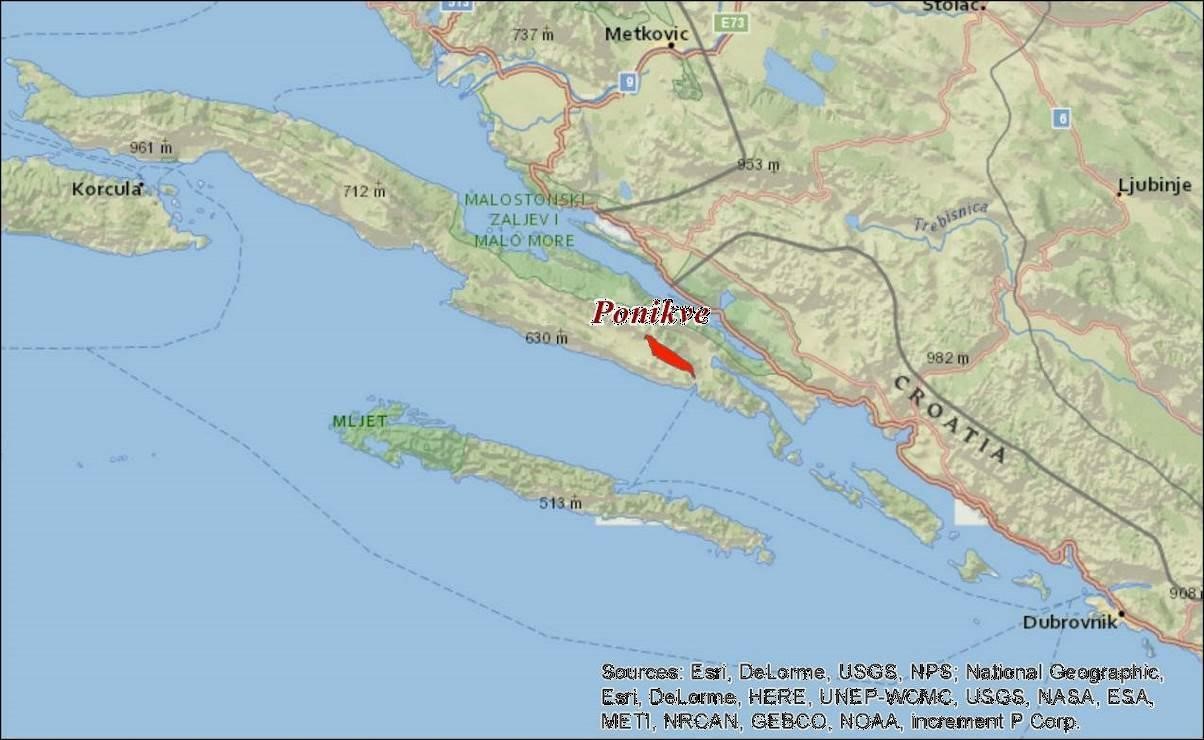
The ZOI "Ponikve" area is located on the Pelješac peninsula near the Municipality of Ston and is marked in red
The whole area is an outstanding example of the traditional way of raising vineyards with terraces and dry stone walls of attractive landscape architecture and view. The viticultural position of Ponikve is one of the most suitable terrains for growing vines on Pelješac, a peninsula well-known for its rich tradition of growing vines. Carefully selected places in Milo, Crnjava, at the foot of the hill Stari Grad, and all-day sunbathing give exceptional quality wine.
Apart from good wines, Ponikve is also known for excellent olive oil.
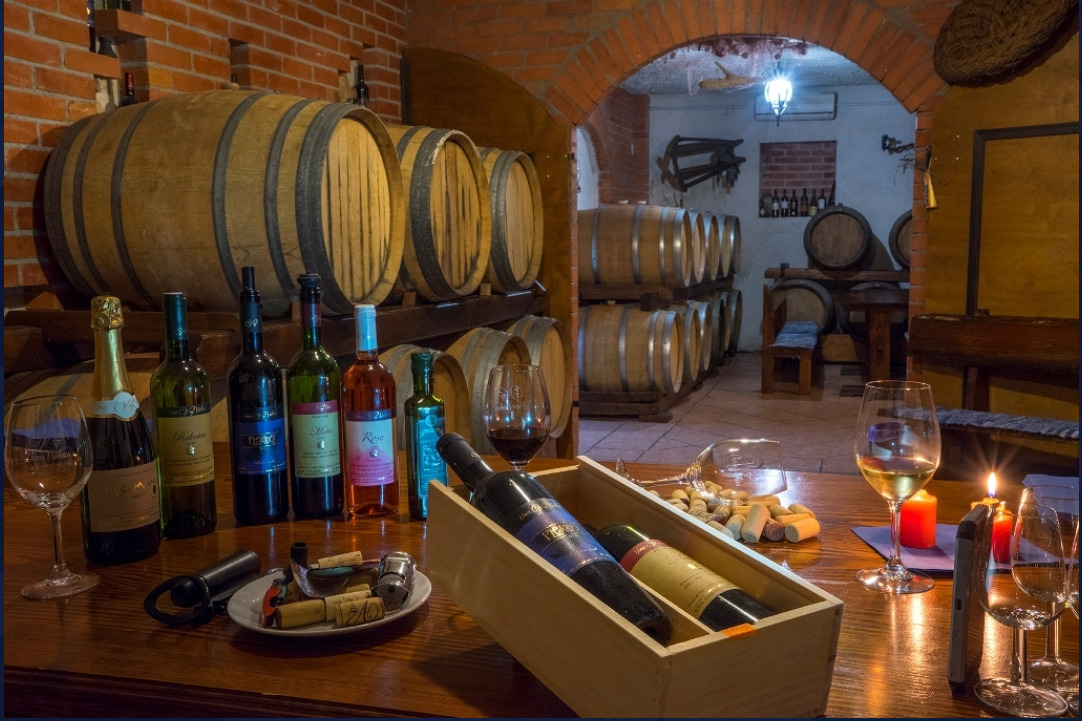
Ston.hr
Recognized black and white grape varieties are Plavac mali, Maraština, and white Pošip. The maximum yield per hectare is 11,000 kilograms or 6,600 liters of wine per hectare, according to the document "Product specification for the protected designation of origin Ponikve" by the Institute for Adriatic Crops and Karst Reclamation from Split.
The protection process for the locality Ponikve lasted for more than seven years, since 2013. The "Pelješac Wine Routes" Association was the project holder, while the development was entrusted to the mentioned institute. The Municipality of Ston, Dubrovnik-Neretva County, and the County Chamber of Commerce supported the Ponikve Site Protection Study production, reports Hina.
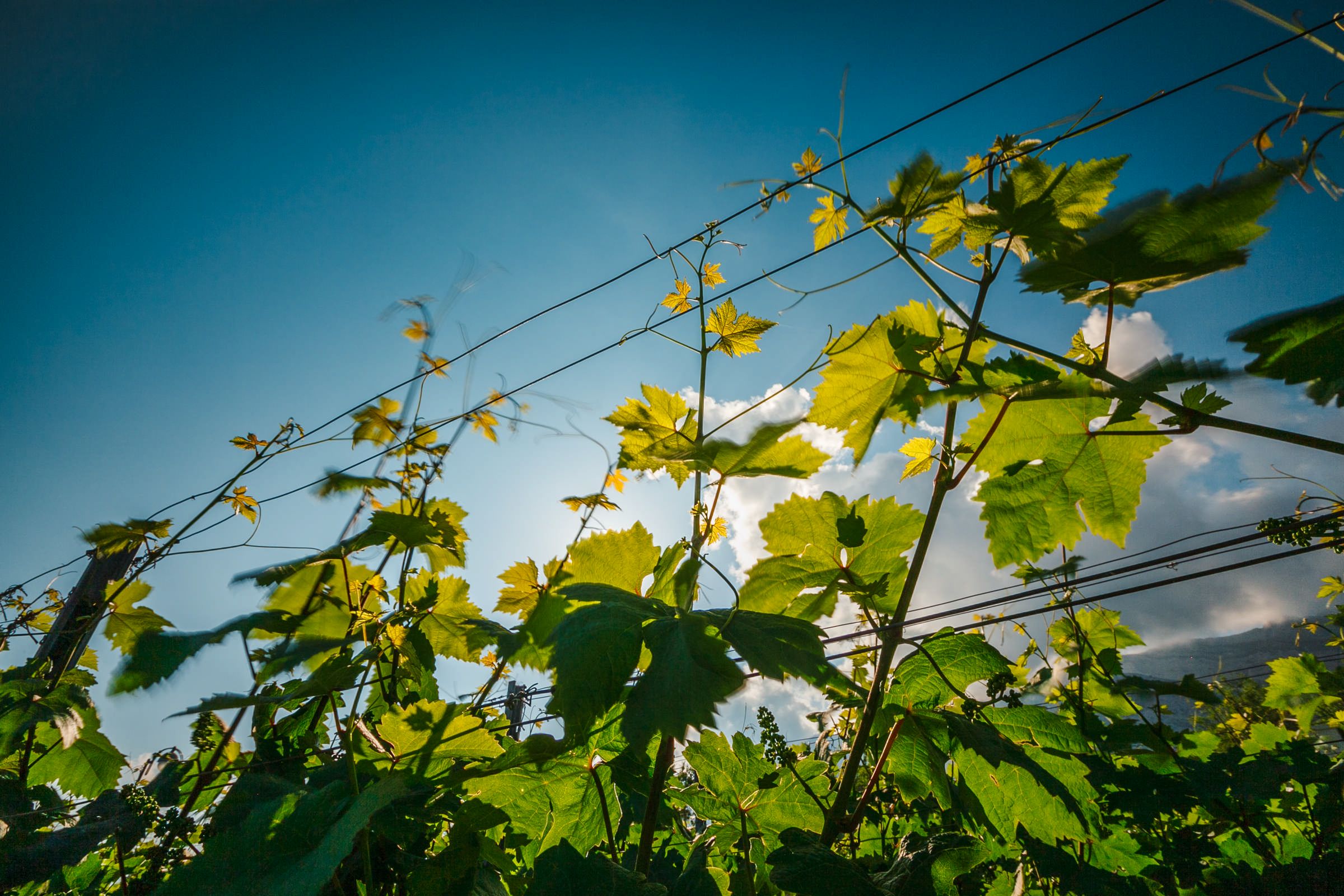
Photo: Romulić and Stojčić
To read more lifestyle news from Croatia, follow TCN's dedicated page.
Dingač Wine at Joe Biden Inauguration an Opportunity for Croatia
January 20, 2021 - Dingač wine will be served at the Joe Biden Inauguration on Wednesday, which is a huge opportunity for the Pelješac wine region and the whole of Croatia.
The inauguration of the new US president Joe Biden on Wednesday will attract people from all over the world - and in addition to the list of distinguished guests, two Croatian wines will have their place in the spotlight.
Namely, T.portal writes that the first protected Croatian wine - Dingač - will be found on the tables of Biden's inauguration, as well as Zinfandel.
Plavac Mali is the most important native grape variety in Croatia, and the best Plavac is produced in the localities of Dingač and Postup on the Pelješac peninsula, on the south side of the island of Hvar, and in the good positions of the Brač and Vis vineyards.
"Dingač had a good reputation before the 15th century and was sold at higher prices than all other wines in the market. It is a premium dry red wine, protected by the Geneva Convention in 1961 and the first Croatian wine protected by law. More than 90 percent of Plavac is produced on Pelješac. The fact that it will be served at Biden's inauguration is a great promotion for the wine itself and the whole of Croatia," says Slobodan Rosić, secretary of the Plavac Mali association from Pelješac.
"I think this is an opportunity for the whole of Croatia, as it is great to have a bottle of wine from Croatia on the tables of the inauguration. The producer is not important either, but Pelješac, Dubrovnik-Neretva County, and Croatia. I think that we winemakers, as well as all our counties and chambers, should start a good wine campaign to place Dingač on the world map; that is a good way," says Rosić.
He adds that such an opportunity should definitely be used because of the coronavirus pandemic, which drastically slowed down sales:
"Because of the coronavirus pandemic, we can't even offer a day of open wines. We have large stocks of unsold wine in warehouses, and we expect restaurants and cafes to open every day. The wine will not be distilled, it will age for a year without income, but it is difficult for winemakers, as they have been without income for a year," he concluded.
Dragan Kovačević, vice-president of the Croatian Chamber of Commerce for Agriculture and Tourism, believes that the selection of Croatian wines for Biden's inauguration is the culmination of many years of trends in their successful export and promotion in the American market.
"Our exports are growing at a rate of 10 to 15 percent per year, and according to data for the first ten months of 2020, it reached 860 thousand dollars or remained at the levels of 2019 despite the business crisis and the COVID-19 pandemic, which hurt all business segments, especially the wine sector, as it is highly dependent on promotional and social events and tourism trends," explained Kovačević. He added that in the USA, which is the fifth most important market for the export of Croatian wines, mostly top bottled wines (over 80 percent of exports) are sent at a high average price compared to other countries Croatia exports.
For example, in the first 10 months of 2020, the average export price of Croatian wines in the United States was 6.84 euro per liter, while in 2019, it was 6.89 euro per liter. Due to the specific distribution method, wine exported from Croatia for $12 for a bottle reaches $35 to $40 on the shelf of an American wine shop, or from $60 to $80 in restaurants.
"Wine for a country like Croatia, which achieves almost a fifth of its GDP through tourism and the multiplier effects of tourism, and is visited annually by over 20 million tourists, is potentially an important export product. Along with gastronomy, wine plays an increasingly important role in the tourist offer and branding of Croatia as an eno-gastro destination," said Kovačević, adding that we must emphasize our advantages, which are over 120 indigenous grape varieties and a mosaic of four wine-growing and wine regions with all varietal and positional specifics, which should be the backbone of marketing.
To read more about lifestyle in Croatia, follow TCN's dedicated page.
Croatian Wine from Peljesac to Be Served at Joe Biden Presidential Inauguration
January 9, 2021 - Special occasions require special wines, which is probably why a Croatian red from Peljesac will be enjoyed at the January 20 Presidential inauguration of Joe Biden.
Where would America be without Croatia?
First, a little stone to build The White House, then a few vines to produce Zinfandel, then a little Super Bowl sports coaching with Bill Belichick.
And now, a little drop of red for the presidential inauguration.
Croatian media is reporting that the Benmosche Family Dingac will be served in Washington on the big day.
Croatian online wine merchants, The Wine and More, have more information about the wine in question, and the rather famous American connection:
Robert Benmosche, was the CEO of MetLife when he retired in 2006 to become a winemaker in Croatia. The Empire State native had built a wine collection of a few thousand bottles when a trip to Dubrovnik sparked an interest in making Zinfandel. Robert bought land on Pelješac peninsula, and planted Plavac mali grapes in protected region where Plavac mali gives the best results. And in Viganj he planted Zinfandel. At the time he was investing in vineyards, they found out that Zinfandel is genetically the same as Crljenak Kaštelanski. Both Dingac and Zinfandel are coming from young vineyards planted in 2006. Wines are made with traditional techniques and kept in barrique barrels for 12 months and in bottle another 18 months.
Croatia wine is of course no stranger to the biggest global ceremonies. At the coronation of Queen Elizabeth II in 1953, 11,000 bottles of the 1947 Ilockli Podrum Traminac were ordered for the Royal guests.
And if you would like to sample a bottle of the famous bottle, you still can, but bring your credit card. When I visited the winery last year, they still had 182 bottles of the 1947 left, with a cool price tag of 55,000 kuna (about US$9000) per bottle. Learn more in Croatia's Most Expensive Wine: Selling Well at 7,400 Euro a Bottle.


